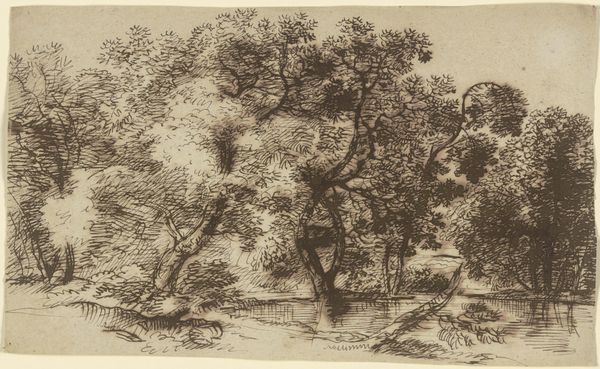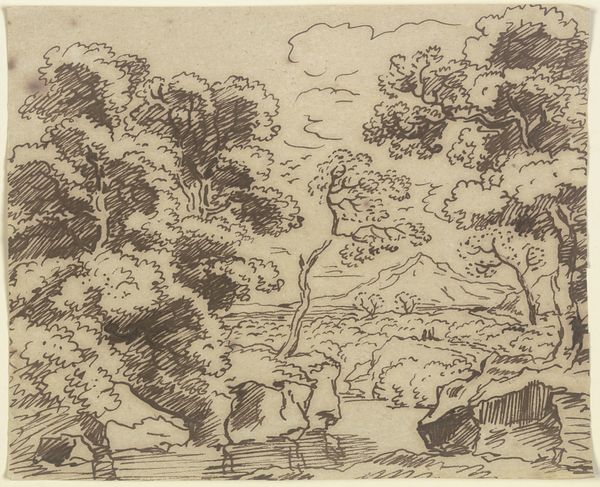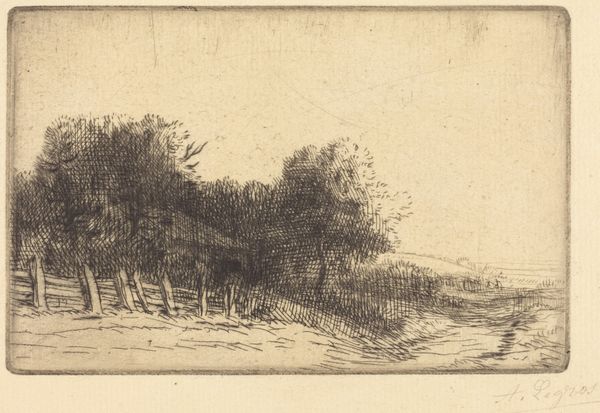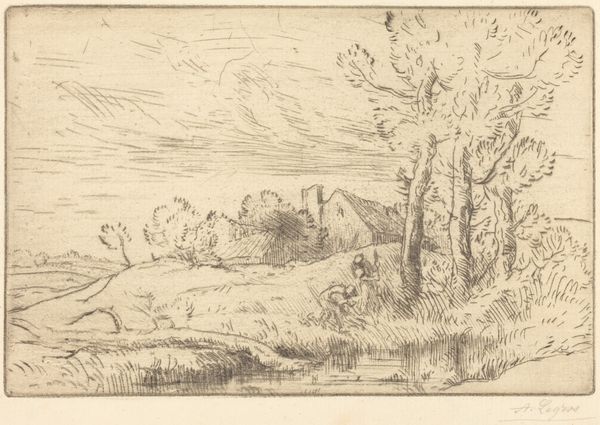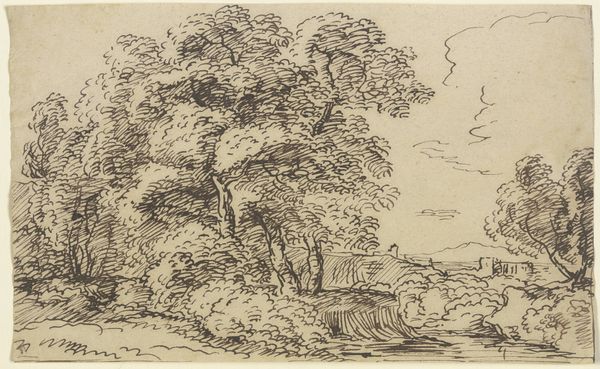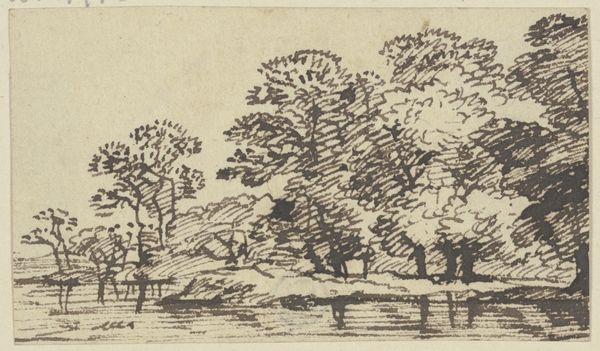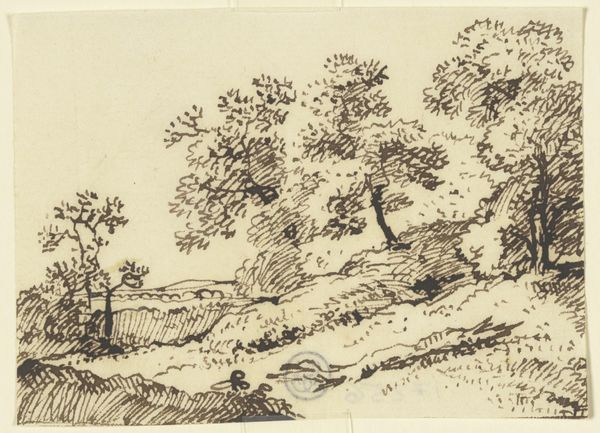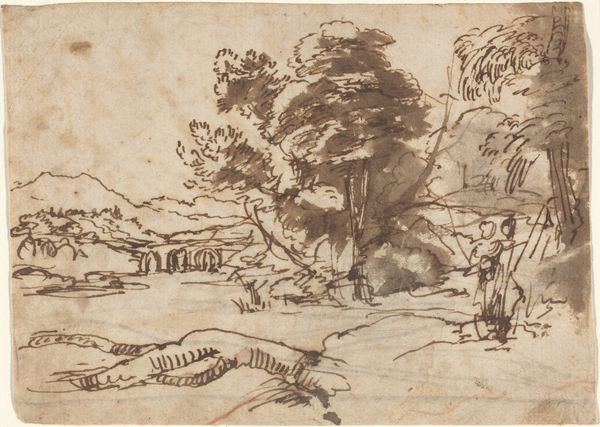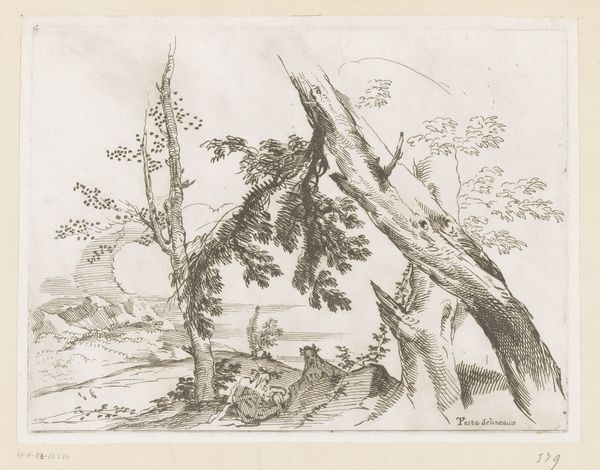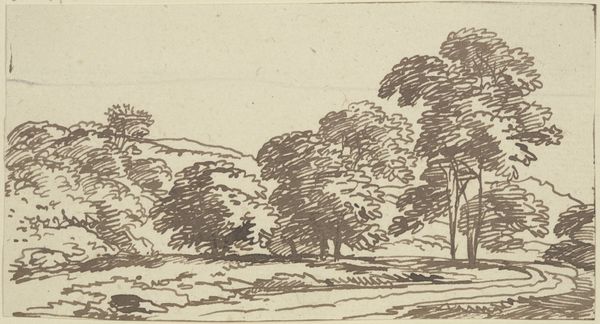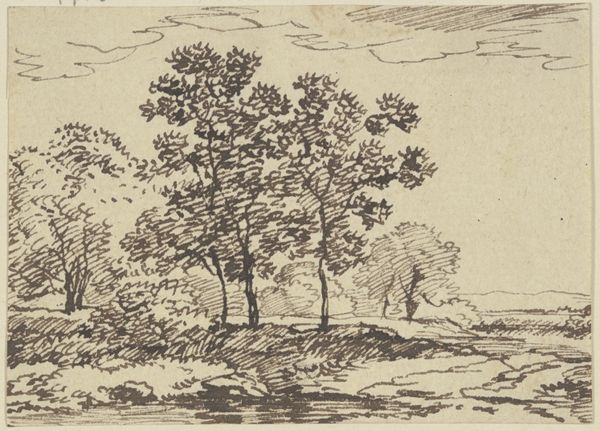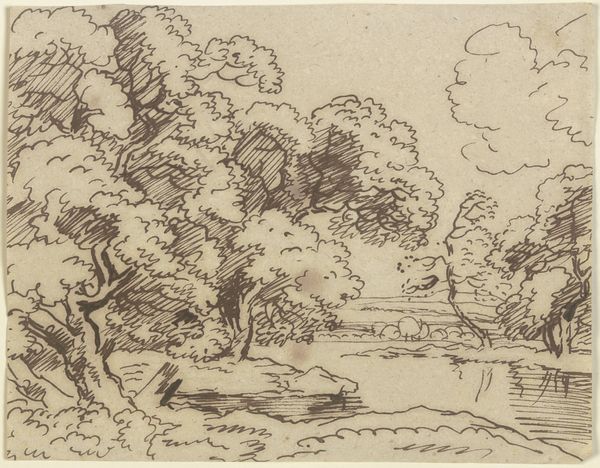
Dimensions: height 126 mm, width 197 mm
Copyright: Rijks Museum: Open Domain
Editor: This is "Clump of Trees with a Vista" an etching by Richard Byron, made sometime between 1750 and 1799. It feels very enclosed, almost secretive. What do you see in this piece, from a broader historical perspective? Curator: Well, immediately, I'm struck by how this seemingly simple landscape embodies complex ideas about land ownership and social hierarchies in the 18th century. The carefully cultivated trees and the suggestion of a vista point—who exactly had access to that view? Editor: So you're thinking about who controlled the land, who benefited from it? Curator: Exactly. Think about the enclosures, the privatization of common land that was happening during this period. This image isn't just a pretty scene; it's a visual manifestation of power and exclusion. Who is allowed to wander there freely, and who is restricted? Consider, too, the act of creating a print itself – making multiples makes this scenery more "accessible" yet perhaps misses the point about exclusive ownership in the first place. Does that tension create new narratives for you? Editor: That’s fascinating; I hadn’t considered it that way. It really makes me think about the role of art in reinforcing, or even questioning, these power structures. The act of viewing becomes political. Curator: Precisely. And think about the relationship between the natural and the constructed, how even nature can be molded to reflect particular ideologies. Editor: I always thought landscapes were fairly neutral subjects. Curator: Ah, but neutrality is itself a position, isn’t it? Now we both have new frameworks with which to interpret it. Editor: This has totally changed how I see landscapes now. I'm not sure I'll ever look at a "clump of trees" in the same way again!
Comments
No comments
Be the first to comment and join the conversation on the ultimate creative platform.
